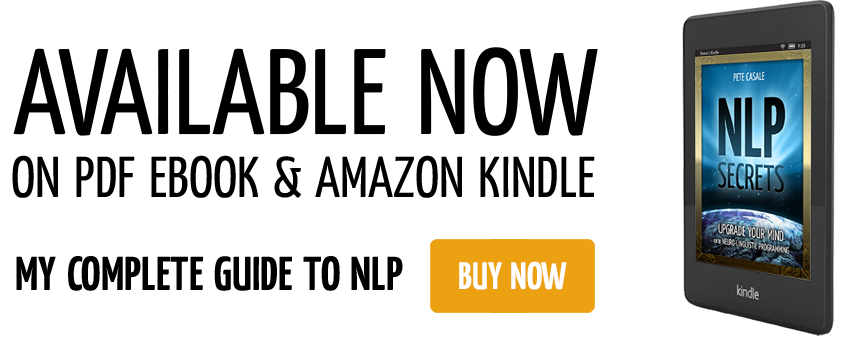 The Swish Pattern is an NLP technique that helps replace unfavorable emotions or behaviors with more positive ones. With some creativity, the Swish technique can be applied in various ways, such as making gym visits more enjoyable or enhancing the taste of healthy foods.
The Swish Pattern is an NLP technique that helps replace unfavorable emotions or behaviors with more positive ones. With some creativity, the Swish technique can be applied in various ways, such as making gym visits more enjoyable or enhancing the taste of healthy foods.
Think of Swish as the neuro-linguistic programming equivalent of your computer's "copy and paste" function. On your computer, you copy some text and paste it elsewhere. Similarly, with NLP Swish, you can take part of a memory or emotional tag and paste it over the tag of a different memory.
What is the NLP Swish Technique?
Let’s explain NLP Swish in a more engaging way. Every memory has emotions attached to it, some good (positive memories) and some bad (negative memories). Let's use a roleplay to show how NLP Swish can "edit" your emotional tags.
Imagine you’re a teenager who just moved to a new house, and tomorrow is your first day at a new school. You don’t know anyone there. How do you feel? You might feel nervous, anxious, or worried. Feeling this way can make you come across as anxious to others, increasing the chances of feeling alienated—a vicious cycle.
You associate "anxiety" with the condition "first day at a new school." It would be better to associate "excitement" instead. The Swish technique can help make that happen.
First, recall a memory associated with excitement—like anticipating a trip to a theme park or a party with friends. Focus on how you feel, thinking about the adventure ahead. Now, picture that situation in your mind and SWISH! Quickly swap that image with the image of going to school tomorrow. Before any anxiety starts to form, SWISH! Swap back to the good memory.
The idea is to keep recalling how excited you felt and hold onto that feeling. While maintaining the positive emotion, "swish" back and forth quickly between the two images.
How The Swish Pattern Works
CONSCIOUS MIND: Recall the good memory, please.
UNCONSCIOUS MIND: Okay - we've just been given an order to recall the good memory. Let me see... here it is! Okay. Here is the memory, and here are the good feelings associated with it.
Thanks. Concentrate on that feeling.
Affirmative. I'm strengthening that good feeling. I'll have the brain release a very mild amount of endorphins as well.
Now recall the bad memory, please.
Yes sir, here is the bad memory, this is what it looks like. Now actually, the feelings associated with this memory are different, I'll just look them up...
SWISH! Back to the good memory!
Oh! I hadn't finished collecting that last memory's feelings. No matter. Back to the good memory. Still good feelings.
Yes, concentrate on those good feelings. Now, recall the bad memory again.
Affirmative. Okay now the last time I brought up the bad memory, we had good feelings...
Yes! Keep those good feelings!
Hmm... I'm not sure. I'll double check that bad memory for feelings...
No you don't! SWISH! Good memory again! How do I feel?
Good memory is here, again. Good feelings, of course.
SWISH! Back to the bad memory. How do I feel?
Again, the last 2 times we had the bad memory, there were good feelings. But let me check...
SWISH! Good memory, just tell me how I feel...
Good feeling.
SWISH! How do I feel?
Good feeling...
SWISH!
Good feeling...
SWISH! SWISH! SWISH-SWISH!
Good, good, good...
Now, please recall the bad memory and confirm, how do I feel about it?
Like I say, good.
Heh, heh, heh. Sucker.
And that is more or less how the Swish Pattern works in NLP.
Next NLP Technique: The Loop Break

NLP Technique: Swish
Swish, also known as Swish Pattern, is an NLP technique that is very useful for replacing an unfavourable emotion or behaviour with a more useful one. With a little bit of creativity, Swish can be used to do a lot of useful things, such as make going to the gym more fun or making foods that are good for you taste better.

NLP Seduction
NLP Seduction is an entire art on its own. If you have a thorough understanding of NLP, seduction is a straightforward process. Some suggest that using NLP for seduction is unethical, and that we shouldn't use "mind control" for seduction, but I strongly disagree. Everyone who attempts seduction is using some form of mind control whether they know it or not. Buying flowers, wearing cologne, even having dinner with someone has far deeper psychological connections than you may expect, and are forms of mind control.

Upgrade Your Mind with NLP Secrets. Boost Confidence. Beat Anxiety. Quit Addictions. Build Rapport.